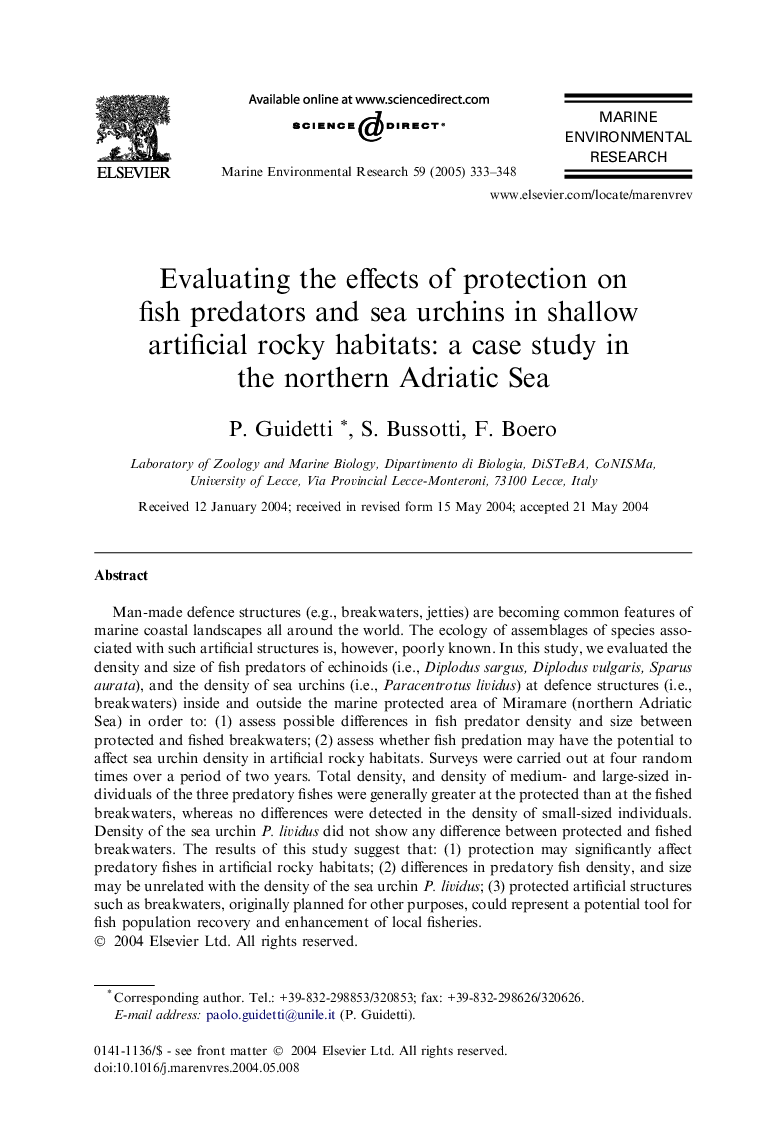| Article ID | Journal | Published Year | Pages | File Type |
|---|---|---|---|---|
| 9484355 | Marine Environmental Research | 2005 | 16 Pages |
Abstract
Man-made defence structures (e.g., breakwaters, jetties) are becoming common features of marine coastal landscapes all around the world. The ecology of assemblages of species associated with such artificial structures is, however, poorly known. In this study, we evaluated the density and size of fish predators of echinoids (i.e., Diplodus sargus, Diplodus vulgaris, Sparus aurata), and the density of sea urchins (i.e., Paracentrotus lividus) at defence structures (i.e., breakwaters) inside and outside the marine protected area of Miramare (northern Adriatic Sea) in order to: (1) assess possible differences in fish predator density and size between protected and fished breakwaters; (2) assess whether fish predation may have the potential to affect sea urchin density in artificial rocky habitats. Surveys were carried out at four random times over a period of two years. Total density, and density of medium- and large-sized individuals of the three predatory fishes were generally greater at the protected than at the fished breakwaters, whereas no differences were detected in the density of small-sized individuals. Density of the sea urchin P. lividus did not show any difference between protected and fished breakwaters. The results of this study suggest that: (1) protection may significantly affect predatory fishes in artificial rocky habitats; (2) differences in predatory fish density, and size may be unrelated with the density of the sea urchin P. lividus; (3) protected artificial structures such as breakwaters, originally planned for other purposes, could represent a potential tool for fish population recovery and enhancement of local fisheries.
Related Topics
Physical Sciences and Engineering
Earth and Planetary Sciences
Oceanography
Authors
P. Guidetti, S. Bussotti, F. Boero,
